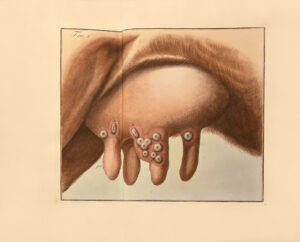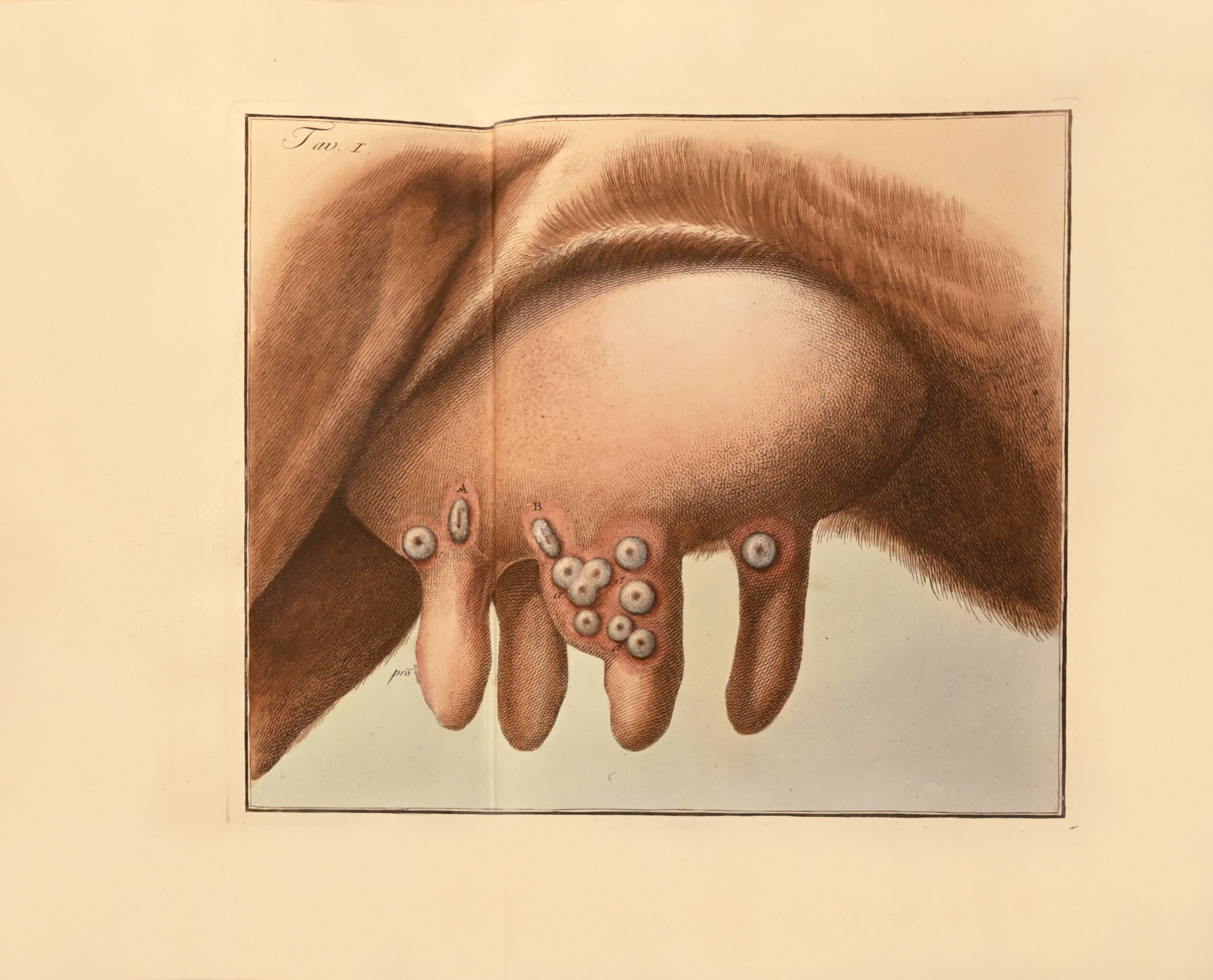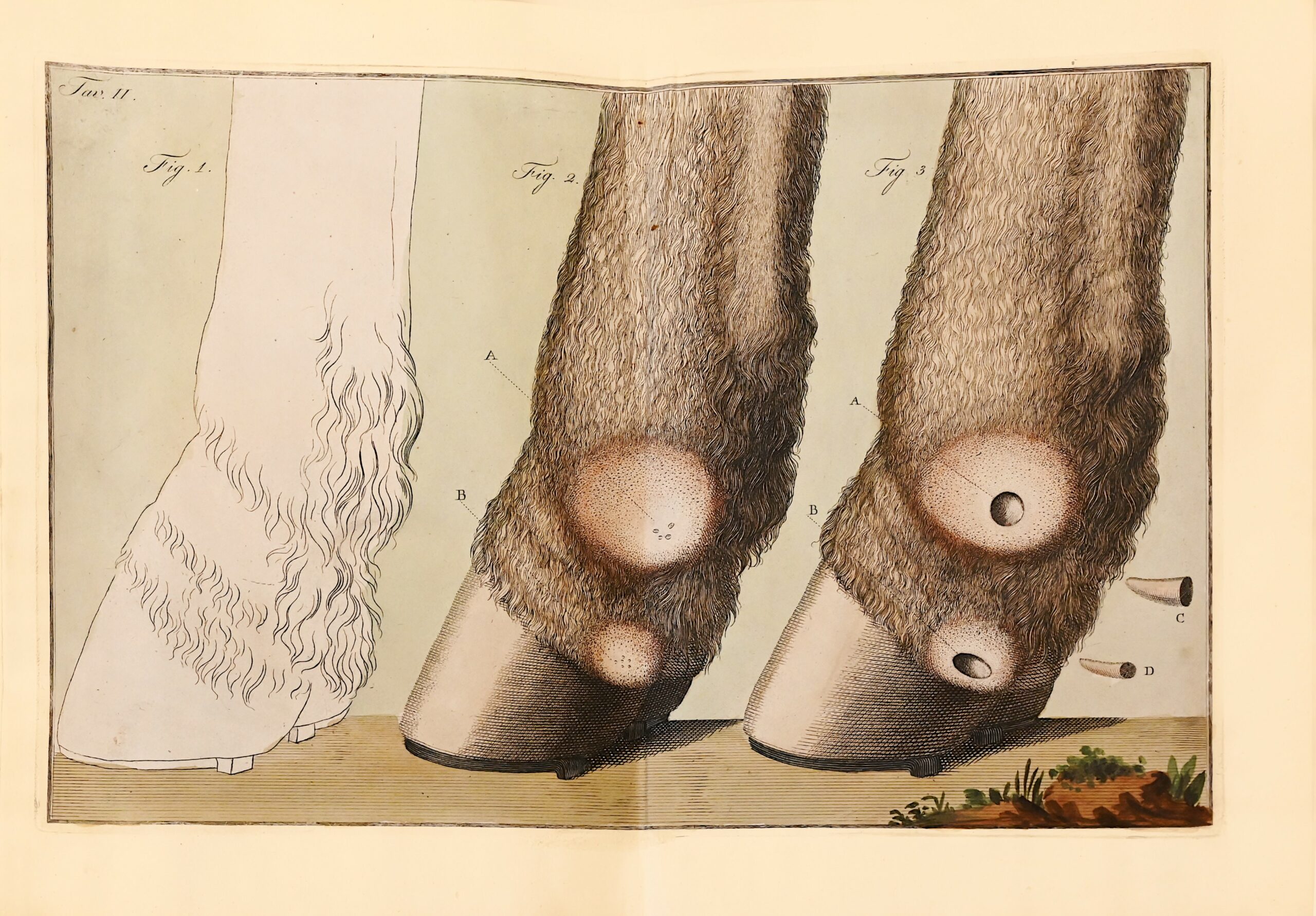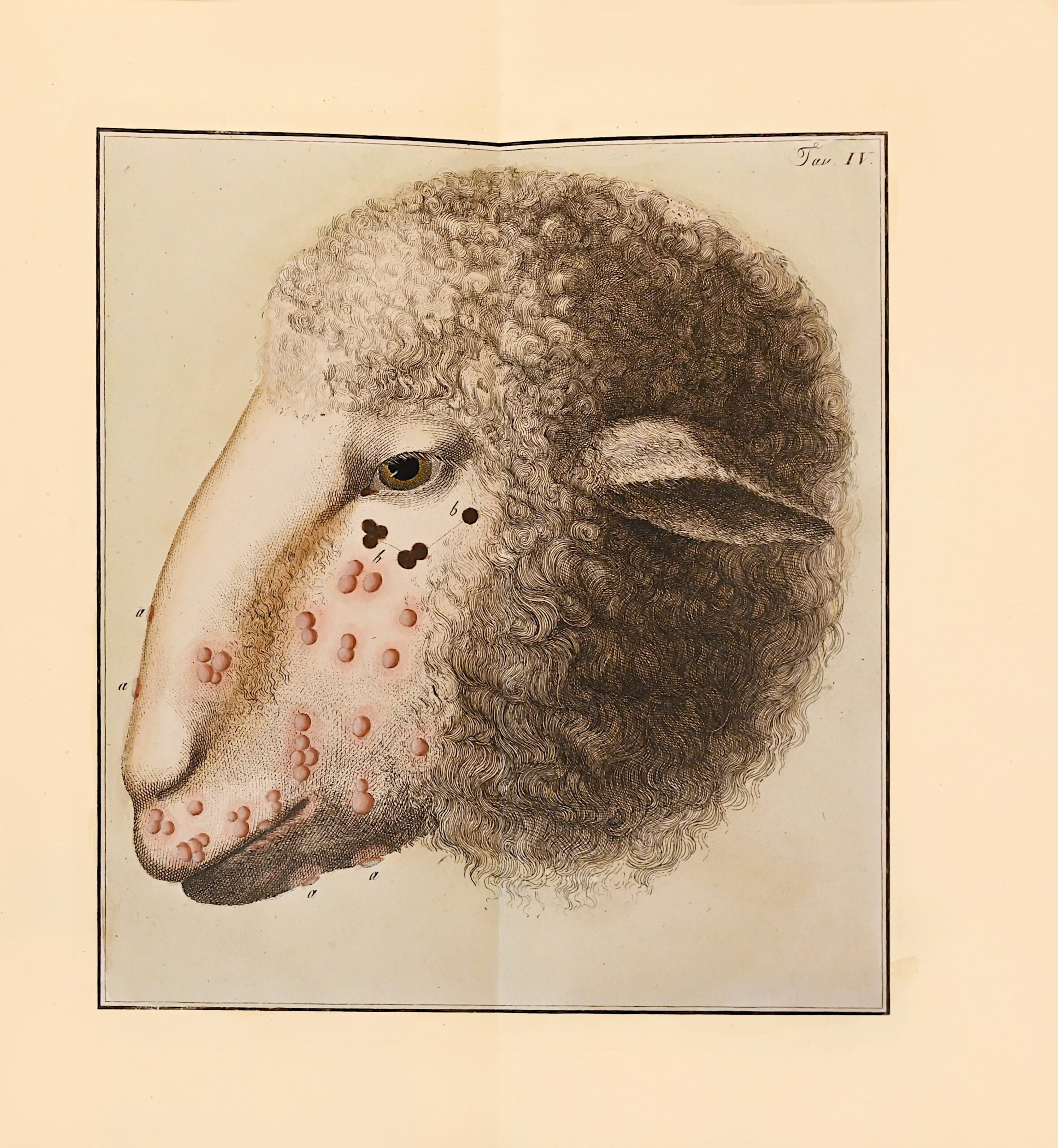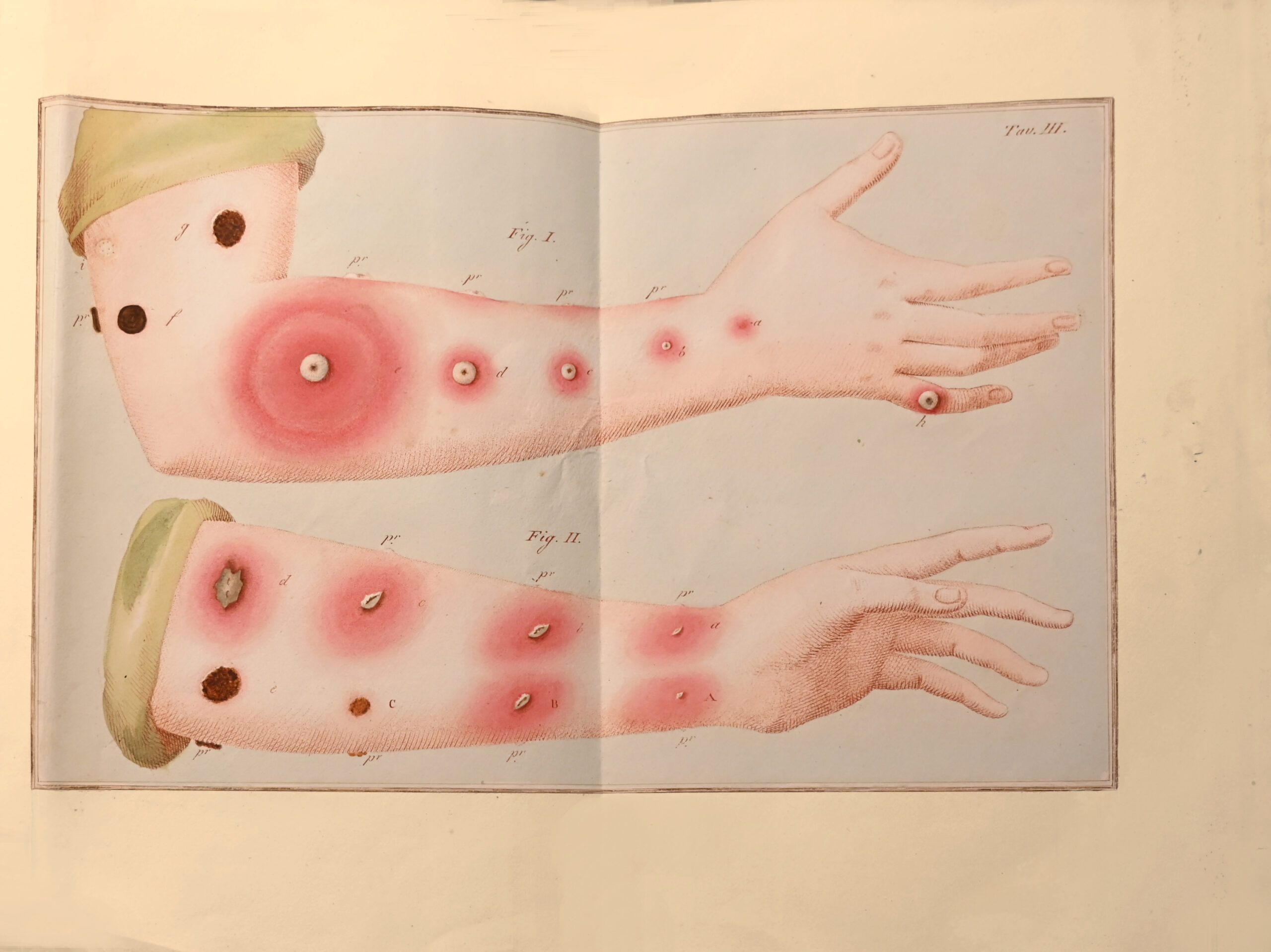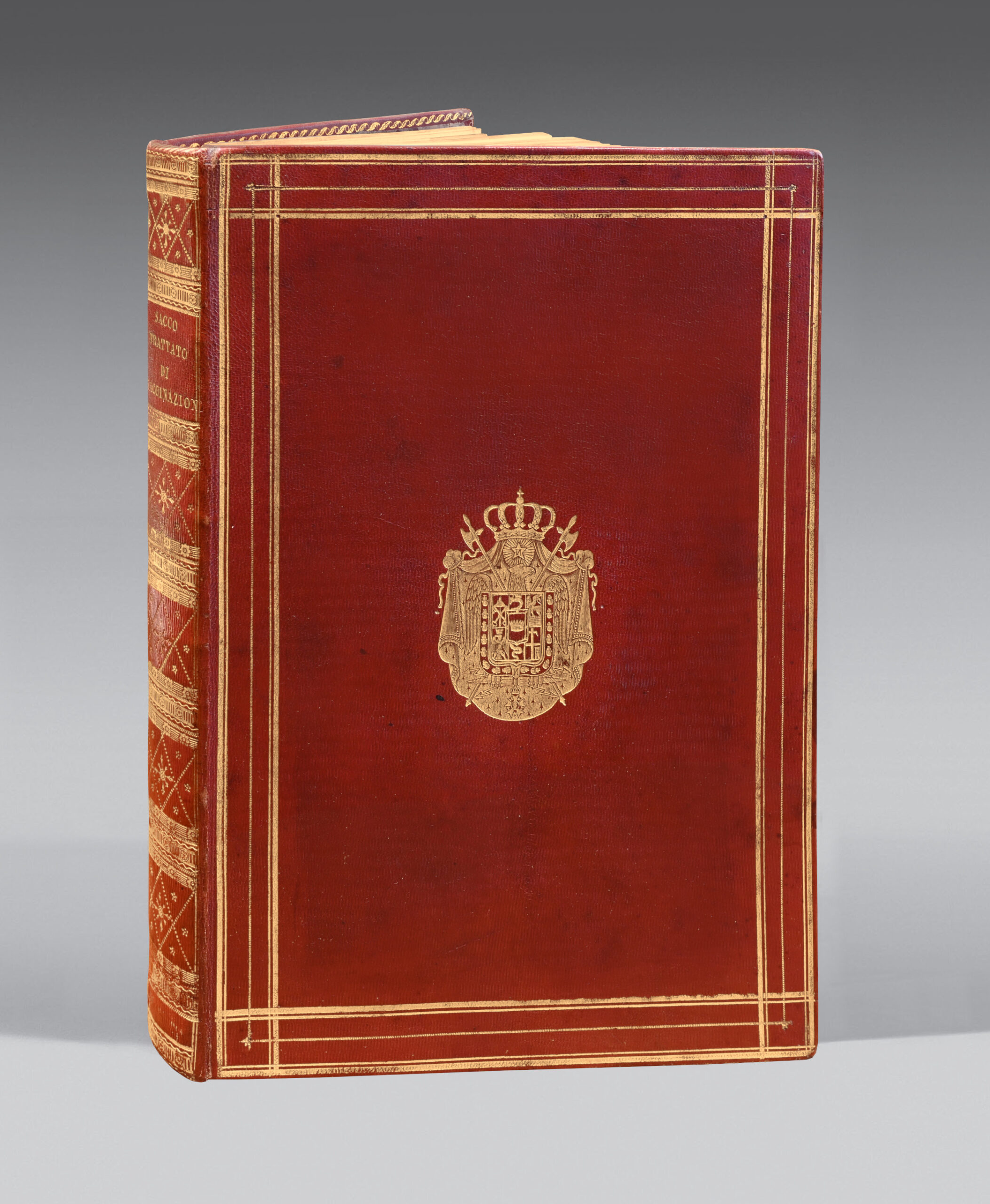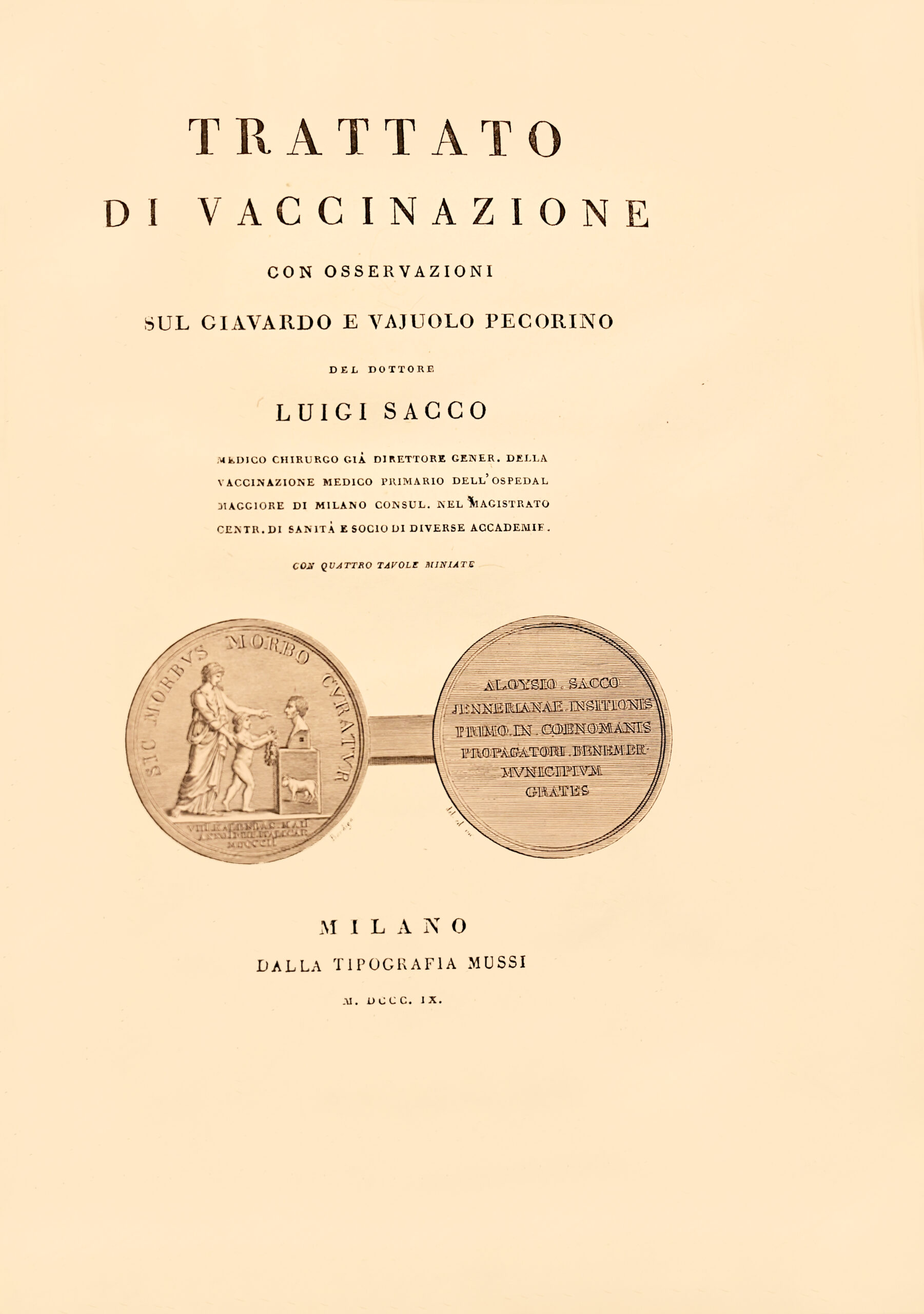Milan, Tipographia Mussi, 1809.
4to, 1 portrait of Doctor Jenner, 223 pp., (3), 4 folding plates out of text.
Straight-grained red morocco, large gilt fillet border around the covers, arms gilt-stamped in the center, spine decorated, gilt inner border, gilt edges. Contemporary armorial binding.
303 x 225 mm.
First edition of the Traité sur la vaccination by Luigi Sacco (1769-1836).
In 1809, he published his most important work, “Traité de vaccination, avec observations sur la variole javardo et pecorino”, in which he summarized what he had written previously, dedicating the work to Prince Eugene de Beauharnais, Viceroy of the Kingdom of Italy. The illustrious professor Giuseppe Frank called this work ‘Opus aureum’. The work was translated in Germany by Guglielmo Sprengel, in France by Joseph Daquin and also in England. Doctor Sacco’s fame became worldwide. Very grateful to the great Jenner, he declared in his treatise that Jenner’s discovery was one of the most precious gifts of Providence and deserved the gratitude of present and future generations.
When, in 1798, Edward Jenner published ‘Une enquête sur les causes et les effets des vaccins varioliques’, in which he described his own vaccination method, Luigi Sacco became interested in the causes of smallpox contamination in Italy. In September 1800, he travelled to Varese, where he examined a number of Swiss cows suffering from smallpox and showing pustules and scabs on their udders. He decided to take material from inside the mature pustules to carry out his experiments.
In his book ‘Observations pratiques sur l’utilisation de la variole comme conservateur de la variole humaine’, Dr Sacco wrote the following: ‘Même s’il me semblait qu’il n’y avait aucun doute sur le fait qu’il s’agissait là de la véritable variole, même si c’était la première fois que je la voyais, le soupçon s’est élevé en moi que les pustules pourraient être de celles qui accompagnent la fausse variole décrite par Jenner.’
The first experiment was carried out on five children aged between 2 and 7. As they were afraid of vaccination, Dr Sacco vaccinated himself to convince them. The ease with which he was vaccinated, the absence of pain and the promise of rewards encouraged the children to allow themselves to be vaccinated.
Four of them contracted the smallpox vaccine and one remained unaffected, even after a second vaccination. Dr Sacco also contracted vaccinia after inoculation, with the appearance of various pustules which dried up after a few days. Between September 1800 and April 1801, he performed over 300 transplants of the vaccine virus in Varese, Giussano, Montonate and, for the most part, Milan. These were the first triumphs of vaccination in Lombardy, and the government of the Cisalpine Republic appointed Dr Sacco Director of Vaccination, making orphanages available for public experiments.
« Mr Louis Sacco, qui a tant fait pour la propagation de la vaccine, et qui a été le directeur général de cette inoculation en Lombardie, semble être oublié par le Gouvernement. Ses compatriotes même ne lui ont pas tenu assez de compte de son zèle. Il é étendu plus loin que moi ses expériences sur les animaux, ainsi qu’on le voit dans son bel ouvrage in-4 avec quatre planches, non compris le portrait du Dr Jenne, parfaitement ressemblant, au frontispice : Trattato di vaccinazione con osservazioni, etc., Milan, 1809. » (L. Valentin, Voyage médical en Italie).
Discoveries about the smallpox vaccine and international reputation :
From the first vaccinations, he used a needle similar to the one used to lower cataracts. He also discovered one of the most important advantages of the smallpox vaccine: among humans, this disease is not contagious, being transmitted only by inoculation.
Thus, according to Dr Sacco, those who had been vaccinated could mingle with those who had not, and with all those who had not contracted smallpox, without fear of causing them any harm, whereas with smallpox inoculation, their lives were often put at risk, endangering not only the person vaccinated, but also those around them. He believed that the difference in the names given by the inhabitants to vaccinia was the cause of the delay in this discovery. The disease was called croffera, scabiola, broccardo, varola, etc….
After 1801, he carried out vaccinations in Parma, Reggio Emilia and Modena and, after visiting Bologna, continued to experiment with grafting smallpox vaccine to counter the proliferation of a fatal smallpox epidemic. It was a success, and the grateful people of Bologna rewarded Dr Sacco with a gold medal, as did the people of Brescia in May 1802.
Dedicated to Prince Eugene Napoléon, viceroy of Italy, the work is adorned with 1 portrait of Jenner as frontispiece, 1 vignette representing the author and 4 large folded plates, out of the text, in contemporary colours.
Precious presentation copy on large paper with the very rare arms of napoleon 1st as king of Italy (Olivier, 2675 n° 2).
Napoleon had in fact taken the iron crown of the ancient Lombards in Milan on 18 March 1805 as King of Italy.
From the Huzard library, with his stamp and this autograph note: “this copy of Sacco was given to me by Prince Eugene Napoléon, during my trip to Milan in 1811 to inspect the veterinary school there”.
Attached is an autograph letter, signed by Huzard, 18 December 1781; one page 4to to Virq d’Azir sending him his first memoir on the illness prevailing in Paris.
Napoleon Bonaparte, second son of Charles-Marie and Marie-Laetitia Ramolino, was born in Ajaccio on 15 August 1769; promoted to second lieutenant in 1785, he rose rapidly in rank and was already a division general in 1795; on 9 March 1796 he married Marie-Joséphine-Rose Tascher de la Pagerie, widow of the Viscount de Beauharnais, a few days after being appointed commander-in-chief of the army of Italy; having overthrown the Directoire in the coup d’état of 18 brumaire an VIII (9 November 1799), he was appointed first consul for ten years (24 December 1799), then consul for life on 2 August 1802; He was proclaimed Emperor of the French by the Senate in 1804, and was crowned in Notre-Dame as Napoleon I by Pope Pius VII on 2 December of the same year; in 1805, having established the Cisalpine Republic as a kingdom, he was crowned King of Italy in Milan; a year later, in 1806, he took the title of Protector of the Confederation of the Rhine.
